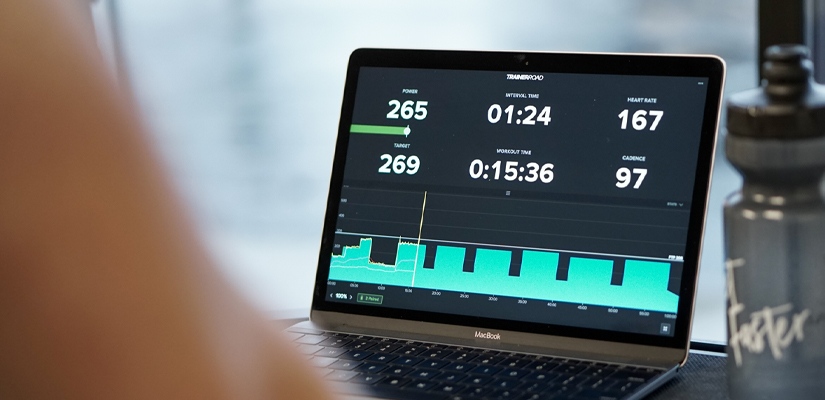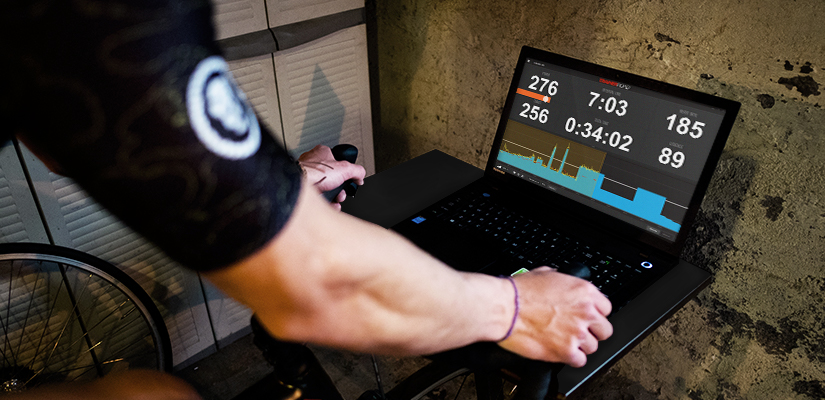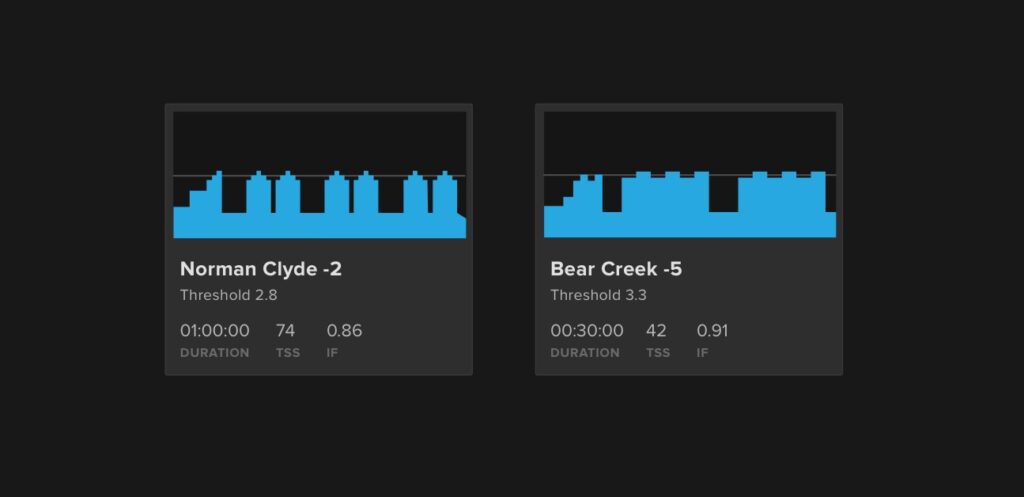Functional Threshold Power: What FTP Means to Cyclists

FTP is a cycling metric that stands for Functional Threshold Power. It represents an approximation of your maximal lactate steady state, measured in watts. In cycling training, FTP is used to determine power zones used in training, and help give athletes a point of reference to help with pacing.
For more information on training with power, check out Ask a Cycling Coach Ep 195.
Cycling FTP Definition
Functional Threshold Power (FTP) is a measure of your cycling fitness and ability to maintain a high but manageable power output for a somewhat lengthy duration. From a physiological perspective, it’s the cycling power you produce when your lactate production has risen, leveled off, and then closely matches your body’s ability to remove lactate. This just barely keeps that lactate flooding at bay. In cycling, FTP is that grey area between the power you can sustain for a very long duration, and the fleeting power you can only tolerate for a handful of minutes.
Adaptive Training
Get the right workout, every time with training that adapts to you.
Check Out TrainerRoadWhen you are cycling, FTP is the balance point between energy supply and demand. Specifically, FTP is the balance between your aerobic and anaerobic energy systems. When you are cycling at low intensities, you are using your aerobic system. The aerobic system uses oxygen to metabolize fuel to create the needed energy. When your aerobic system can meet the energy demands of your muscles, there’s less contribution from your anaerobic energy system.
However, when cycling at higher intensities, the anaerobic system contributes more. The anaerobic system metabolizes fuel sources without oxygen. It creates energy much faster but for a shorter time. Continue to ride at a high intensity, and the byproducts of the anaerobic system overwhelm your ability to clear them. So your breathing increases, the legs start to burn, and your time at this power output becomes minimal. Functional Threshold Power the harmony between energy systems.
What FTP Means for Cycling and Training
The primary reason FTP is an important metric is that it’s a quantifiable way to measure your cycling fitness while providing a framework to gauge the difficulty of your rides. Additionally, for an advanced cycling coaching system like TrainerRoad, it serves as the basis of many other power-based training metrics like Training Stress Score and Intensity Factor.
For example, a cyclist completes an hour-long ride and finishes the ride with a Normalized Power (NP) of 200w. Normalized Power is a weighted average that takes into account the energy cost of higher power efforts. But without knowing the athlete’s FTP, we don’t know if this was an easy endurance ride or an incredibly difficult one.
Cycling FTP provides the context. Let’s assume this cyclist has a 300w FTP. That means that they rode at about 66.7%, which is an easier endurance ride. However, if their FTP was 210w, then the difficulty changes dramatically. Instead of an easy ride, they would have been riding at 95%, which is a hard thing to do for an hour.
Adaptive Training
Get the right workout, every time with training that adapts to you.
Check Out TrainerRoadFTP and training
This context is vital for training as well because the difficulty of cycling workouts needs to be scaled to your current fitness level. A structured training plan progressively trains the energy systems needed to grow your fitness. Using cycling power zones, each workout in a cycling training plan is designed to provide just enough training stimulus to drive the adaptations that make you a faster cyclist.

Knowing your FTP ensures that every cycling workout is optimized to your current fitness level. Also, it will help you quantify the amount of training stress you are racking up. This is an important metric to track. Too little stress lacks the needed stimulus the body requires for adaptation. Too much, and you’ll overpower the body’s ability to recover. The good news is that TrainerRoad serves like your cycling coach and does both for you automatically.
More on Power-Based Cycling Training
Cycling Training Plans Designed to Raise Your FTP
TrainerRoad has cycling training plans specifically designed to help cyclists of all levels improve their FTP. These plans incorporate structured workouts that target high power output for extended periods of time so your threshold power will improve.
Custom FTP-Boosting Training Plan
TrainerRoad uses a rapidly growing database of over 250 million workouts from athletes of all abilities around the world to learn the best way to increase FTP. It analyzes your training history and learns what training works best to make you faster, then gives you a fully customized training plan designed to raise your FTP. As you complete workouts, TrainerRoad analyzes every workout and updates your training plan to give you the right workout every time.
Whether you’re new to structured training or a seasoned racer aiming to increase your cycling power, these plans give you the training you need to get FTP gains. It’s like having the knowledge, flexibility, and attentiveness of a world-class cycling coach for a fraction of the cost.
Adaptive Training
Get the right workout, every time with training that adapts to you.
Check Out TrainerRoadWhy FTP is Important to Cyclists
Aside from properly scaled training, FTP is significant to cyclists for many reasons. For some, it’s a way to track their growing fitness and for others is a way to compare themselves to other riders. Here are some important ways to use FTP for cycling.
Cycling Performance
FTP comparisons between cyclists do not tell the entire story but can give some context to performance. It doesn’t reveal your maximum sprint power or repeatability. However, the higher your FTP, the faster you’ll be able to ride, especially on flat and rolling terrain. As you ride up steep, long climbs, power-to-weight becomes more important. W/kg is usually expressed as FTP divided by body weight in kilograms.
Pacing for Races, Events, or Big Rides
Long cycling events, whether they are races or just big rides, are all about energy management. Creating a pacing plan is an excellent way to ensure you not only finish but have fun while riding. With an accurate FTP, you can create a pacing plan for your next century, Gran Fondo, or gravel grinder.
Adaptive Training
Get the right workout, every time with training that adapts to you.
Check Out TrainerRoadHow Cyclists Test FTP
An FTP test is a physical assessment to evaluate your cycling fitness. Although FTP is commonly associated with the highest average power you can sustain for an hour, going out and undertaking that test is unlikely to result in an accurate FTP due to the physical and psychological difficulty of riding at your maximal lactate steady state for that long. Here are some easier and more reliable ways to get your FTP for cycling.
AI FTP Detection
With access to over 250 million activities from athletes in over 150 countries around the world, TrainerRoad’s AI FTP Detection has learned to recognize FTP improvements without the need for painful and complicated FTP tests. The best part? Through the power of AI, AI FTP Detection doesn’t need all-out efforts to know your FTP is changing. Unlike the inaccurate assessments you get from other platforms after a random 20-minute effort, AI FTP Detection recognizes changes in FTP even from just aerobic training. Simply train, ride, and race how you’d like and let TrainerRoad’s AI FTP Detection discover your changes in FTP.
Classic Testing Formats
If you don’t use AI FTP Detection, there are various ways you can get an estimate of your FTP., but all will require skipping a day of training for the test, and all will require you to perform to your potential and pace your effort expertly to get a good result.
Ramp Test
The Ramp Test begins with a 5-minute warmup, then every minute thereafter, it gets slightly harder until you cannot maintain target power any longer. 75% of the best one-minute power you achieve during the test is used as your FTP. Our data shows the Ramp Test results in a more accurate and useful FTP than more traditional, manual FTP testing formats for the majority of riders using TrainerRoad.
20 Minute Test
This test is one of the most difficult for athletes to execute as it requires you to ride at your highest sustainable power for 20 minutes. Your FTP is 95% of the average power during this interval. This format can be challenging to pace correctly and is best done when you have fresh legs and a bit of practice.
8 Minute Test
Slightly easier to pace than a 20-minute effort, the 8-minute FTP test is a more intense version. Just like the other, you’ll ride as hard as you can, avoiding surges, for eight minutes. Then you’ll rest for ten minutes and complete another eight-minute effort. Your FTP is 90% of the average power of the two efforts.
Adaptive Training
Get the right workout, every time with training that adapts to you.
Check Out TrainerRoadMore On FTP and Cycling
TrainerRoad’s AI FTP Detection removes the need for you to ever worry about FTP tests again. Additionally, training plans are designed to increase training stress progressively, thereby providing the stimulus for consistent and lasting fitness gains. Structured training is that stimulus, and stimulus paired with adequate recovery is precisely what you need to get faster.
For more cycling training knowledge, listen to Ask a Cycling Coach — the only podcast dedicated to making you a faster cyclist. New episodes are released weekly.

